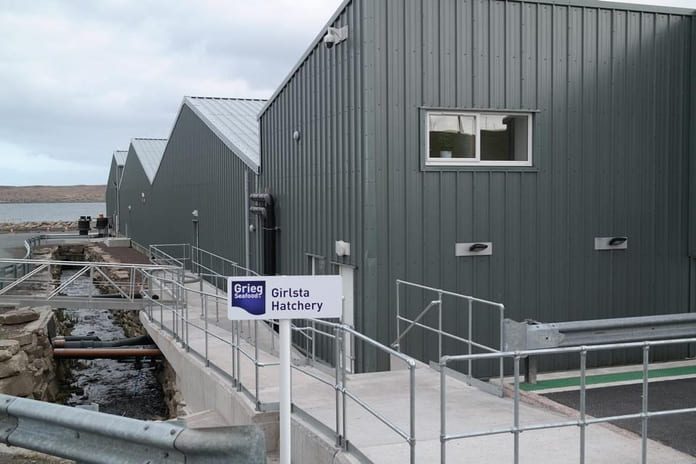Norwegian Vikings have made expensive acquisitions several times.
Rudolf Laschinger had good reason to smile. One winter day in 2001, he sold out of salmon farming. The German smoked salmon baron had built up a business producing 14,000 tonnes of salmon in Shetland. In addition, he had a handful of licenses and a third of salmon processor Sotra Fiskeindustri in Norway.
Now it was time to harvest.
“The agreement ensures a good home for the aquaculture business. Laschinger Aqua Group will now focus on strengthening the position held by Laschinger GMBH as the leading supplier of smoked salmon in Germany. We will also increase our share in the rest of the European market,” Rudolf Laschinger said in a press release at the time.

Failed acquisition
Laschinger cashed in EUR 50 million. The timing could hardly have been better. Just over six months later, the salmon price stood at EUR 1.4.
So who bought the expensive acquisition?
It was a consortium consisting of the two fish farming companies Sjøtroll and Bremnes Fryseri, both with 35 per-cent. In addition, Hallvard Lerøy, Coast Seafood and Angus/Ivor Johnsen each received ten per-cent.
They named the newly acquired company Hjaltland, after the old Viking name for Shetland.
Hit rock bottom
The Hjaltland project quickly became heavy. Especially for the major shareholders Sjøtroll and Bremnes, who had plenty to contend with at home as the salmon price hit rock bottom and sent the industry into its deepest crisis in ten years. In addition, they struggled with poor sites, high density between fish farms and frequent lice outbreaks in the shallow waters of the Shetland archipelago.
In the summer of 2003, equity was lost. Debt approached EUR 54 million.
“New equity is needed. They have to make a capital inflow, and the board is in dialogue with the foreign capital,” Helge Singelstad told IntraFish. At the time he was a board member of Hjaltland and CFO of Lerøy.

Taken over by creditor
Sjøtroll got to taste it first. The majority shareholding in Sjøtroll was taken over by the company’s feed supplier, BioMar, which would later sell this shareholding to Lerøy. Before that, BioMar got rid of the Hjaltland shares.
The buyer was another fish farmer who needed to fatten up the balance sheet ahead of an IPO.
Grieg Seafood had been working with salmon farming in Ryfylke for ten years, with alternating luck. Production costs were high, the results little to boast about. In connection with the IPO in 2007, the company acquired three other fish farmers, Volden in Finnmark, Norway, Hjaltland in Shetland, as well as a handful of licences on Vancouver Island in Canada.

Threw the towel in
The potential of Shetland was indisputably great. The company sat on licences with a potential of 30,000 tonnes. Hjaltland was supposed to be a turnaround case, but soon proved difficult to figure out. So difficult that in 2016 the Grieg Board threw the towel in and put the company up for sale.
Now, after five years without buyers, it seems that a buyer has signed up. Also this time it is Lerøy, together with the business partner SalMar, through the jointly owned Scottish Seafarms (SSF), who seems to be getting the deal.
If nothing, the price tag on Hjaltland appears to have quadrupled in the last 20 years. It is rumoured that SSF has bid EUR 207 million. Inflation has also reached the salmon industry. But the biological challenges that have haunted Shetland farming are still there.

